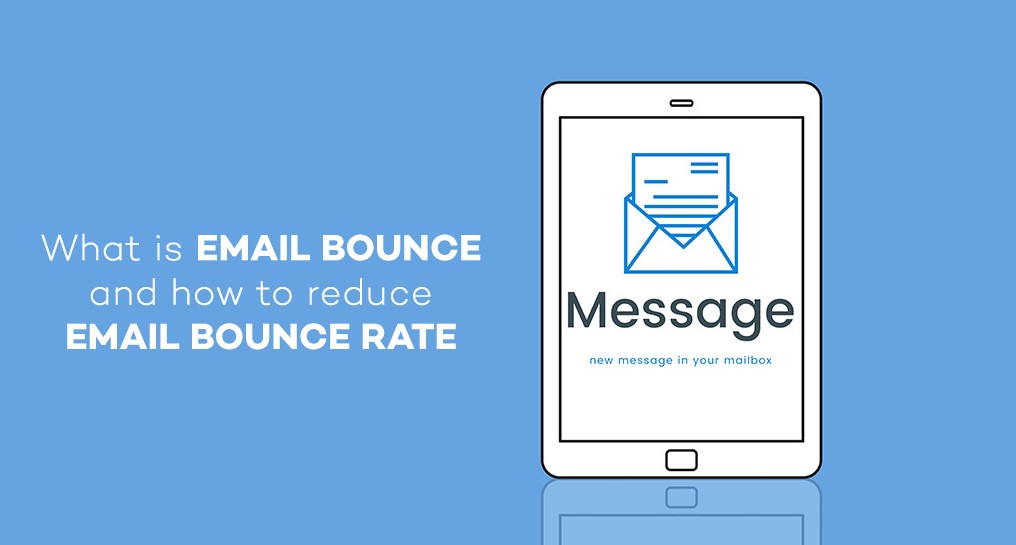
What is Email Bounce Rate?
Email marketing is one of the most effective ways to reach your customers, promote your brand, and drive sales. It’s affordable, scalable, and personal.
But what if your emails never reach the inbox?
That’s where the email bounce rate becomes important. A high bounce rate means your emails aren’t being delivered, and that can hurt your sender reputation. Over time, it can lead to your emails being marked as spam — or blocked altogether.
In this guide, we’ll explain what email bounce rate means, why it matters, and how you can reduce your email bounce rate using simple, proven strategies.
Definition
Email bounce rate is the percentage of email messages that couldn’t be delivered to your recipients.
- Soft Bounce – Temporary issue, like a full inbox or mail server being down.
- Hard Bounce – Permanent issue, such as an invalid or non-existent email address.
Why does this matter?
- Email deliverability
- Sender reputation
- Campaign success
Email service providers (ESPs) monitor bounce rates, and if yours is too high, they may limit your sending or flag your account.
Common Causes of High Email Bounce Rates
- Invalid or Outdated Email Addresses: People often change jobs or stop using certain email accounts, resulting in hard bounces.
- Sending Without Permission: Cold emailing users who didn’t subscribe can cause complaints and bounces.
- Poor List Hygiene: If you never clean your list, it collects fake or inactive addresses over time.
- Low Sender Reputation or Blacklisting: Spamming, high complaints, or bounced emails can damage your domain reputation and get you blacklisted.
- Technical Misconfigurations: Missing SPF, DKIM, or DMARC records can prevent servers from trusting your messages.
How to Reduce Email Bounce Rate
- Use Double Opt-In Forms: Let subscribers confirm their email by clicking a link. This helps filter out fake or mistyped addresses.
- Higher quality email list
- Fewer bounces
- More engaged subscribers
- Regularly Clean Your Email List: Use a reliable Email validation API like InfoGeenie to verify email addresses in real-time.
- Fast, accurate email verification
- Easy API integration
- Keeps your list clean and bounce-free
Whether you're collecting emails from a form, CRM, or eCommerce platform, InfoGeenie helps ensure each address is real and active.
- Avoid Purchased Email Lists: Buying email lists is risky. These often contain fake or old emails that bounce and damage your sender reputation. Always grow your list organically — with permission.
- Authenticate Your Domain: Set up SPF, DKIM, and DMARC to prove to email servers that you're a trusted sender.
- Inbox placement
- Trustworthiness
- Deliverability
Not sure how to set it up? Visit InfoGeenie for helpful guides.
- Monitor Campaign Performance: Keep an eye on bounce rates, open rates, and click-throughs. If bounce rates spike, identify the cause quickly.
- Send Relevant, Valuable Content: Boring or irrelevant emails get ignored — or worse, marked as spam. Always provide value.
- Personalize your emails
- Keep it simple and clear
- Match the content to user interests
- Use a Reputable ESP: A good email service provider (like Mailchimp or SendGrid) helps manage bounces, spam complaints, and compliance.
Tools to Monitor and Reduce Bounce Rate
When it comes to keeping your bounce rate low, InfoGeenie’s Email validation API is a must-have tool.
- Real-time email verification
- Easy-to-use API
- Prevents hard bounces
- Protects your domain reputation
Adding InfoGeenie’s API to your signup forms or email processes ensures that only valid addresses enter your system.
Best Practices for Maintaining a Healthy Email List
- Clean Your List Regularly: Use InfoGeenie’s Email validation API to remove invalid addresses before sending.
- Segment Your Audience: Group subscribers based on behavior or preferences. This helps you send relevant content and boost engagement.
- Run Re-Engagement Campaigns: Reach out to inactive users with a special offer or survey. If they don’t respond, consider removing them.
- Offer Easy Unsubscribe Options: Make unsubscribing simple. It’s better than being flagged as spam.
Conclusion
High email bounce rates hurt your deliverability and your brand reputation — but the good news is that you can fix it.
By using double opt-ins, sending engaging content, and cleaning your list regularly with a reliable Email validation API like InfoGeenie, you can protect your sender reputation and ensure your emails reach the inbox.
Clean list = Better performance.